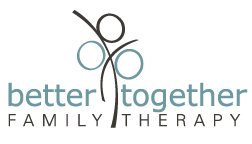ADHD in Adults: Why Women Wait Longer for Diagnosis
ADHD diagnoses among adults, especially women, are on the rise. A Maryland ADHD Therapist explains why.
Attention-deficit/hyperactivity disorder (ADHD) has long been perceived as a condition primarily affecting young boys. And eventually fading away as they grow into adulthood.
However, recent years have witnessed a significant shift in this narrative. There is a notable increase in the number of women being diagnosed with ADHD. This shift challenges traditional perceptions and raises intriguing questions about the reasons behind this surge in diagnoses. So what’s happening?
Signs of ADHD in Women: Our Changing Awareness
One of the main factors contributing to the increased diagnosis of ADHD in women is the evolving understanding of the disorder itself. Historically, ADHD was often associated with hyperactivity and impulsive behavior, traits more commonly observed in boys. However, experts now recognize that ADHD presents differently in girls and women.
Girls tend to exhibit more internalizing symptoms such as inattentiveness, daydreaming, and difficulty with organization. As our awareness of diagnostic criteria has broadened to encompass these subtler symptoms, more women have been correctly identified as having ADHD.
In addition, there has been a growing awareness of ADHD beyond childhood. Studies have shown that the disorder often persists into adulthood. This increased awareness has prompted individuals, particularly women, to seek professional help for symptoms that might have been overlooked or dismissed earlier in life.
Did you know? Dr. Russ Barkley, a renowned ADHD researcher, recommends renaming ADHD “Executive Function Deficit” disorder.
This new name aligns more closely with the “inattentive type” symptoms most often observed in women.
The Role of Hormonal Changes and Life Transitions in Adult ADHD Diagnosis
Hormonal fluctuations associated with puberty, menstrual cycles, pregnancy, and menopause may contribute to the emergence or exacerbation of ADHD symptoms in women. Research suggests that estrogen and progesterone, which fluctuate during different life stages, can impact dopamine levels in the brain, affecting attention and impulse control. These hormonal shifts could explain why some women experience a noticeable change in their ADHD symptoms during certain times in their lives.
Furthermore, major life transitions such as starting college, entering the workforce, becoming a parent, or going through divorce can increase stress levels and demand heightened organizational skills and time management – areas in which individuals with ADHD typically struggle. These transitional periods can highlight previously unnoticed symptoms and lead to seeking a diagnosis.
Recognition of Coexisting Conditions: ADHD, Anxiety, and Depression
Another contributing factor is the growing recognition of ADHD as a condition that often coexists with other mental health disorders. Women with ADHD are more likely to experience anxiety, depression, and eating disorders. The symptoms of these disorders can sometimes overshadow underlying ADHD symptoms, making it more difficult to diagnose. As mental health awareness has improved and the stigma surrounding these conditions has decreased, individuals are more likely to seek help for their struggles, leading to the identification of ADHD.
As We Understand ADHD Better, Women Will Benefit
The delay in diagnosis for women and girls is understandable (but not acceptable). A hyperactive-impulsive child likely is easy to notice in a classroom. They probably get into trouble now and then. And adults search for an explanation. A childhood ADHD diagnosis is the result.
The rise in ADHD diagnoses among women reflects a positive shift in our understanding of the disorder, away from the outdated notion that it solely affects hyperactive young boys. Evolving diagnostic criteria, increased awareness, hormonal influences, and better recognition of coexisting conditions have all contributed to this trend.
While it's crucial to acknowledge that more research is needed to fully understand these factors, this growing awareness paves the way for better identification, support, and treatment of ADHD in women. By addressing the unique challenges faced by women with ADHD, we can ensure that they receive the appropriate care and resources to thrive in all aspects of life.
“Do I have ADHD?” A qualified ADHD therapist can help you find out.
The good news is that ADHD is the most treatable mental health diagnosis. Treatment for ADHD can include psychotherapy, coaching, and medication. The proper treatment can help you discover your hidden ADHD superpowers. And begin living well with ADHD.
When you’re ready to discover the gifts of living with adult ADHD, reach out to our neurodivergence friendly therapists to get started.
This post was written by Sonja Chestnut LCSW-C, a licensed therapist with more than 20 years experience helping parents, children, teens, and families discover their ADHD superpowers. Sonja treats adults, children, and teens at Better Together Family Therapy in Kensington, Maryland.

